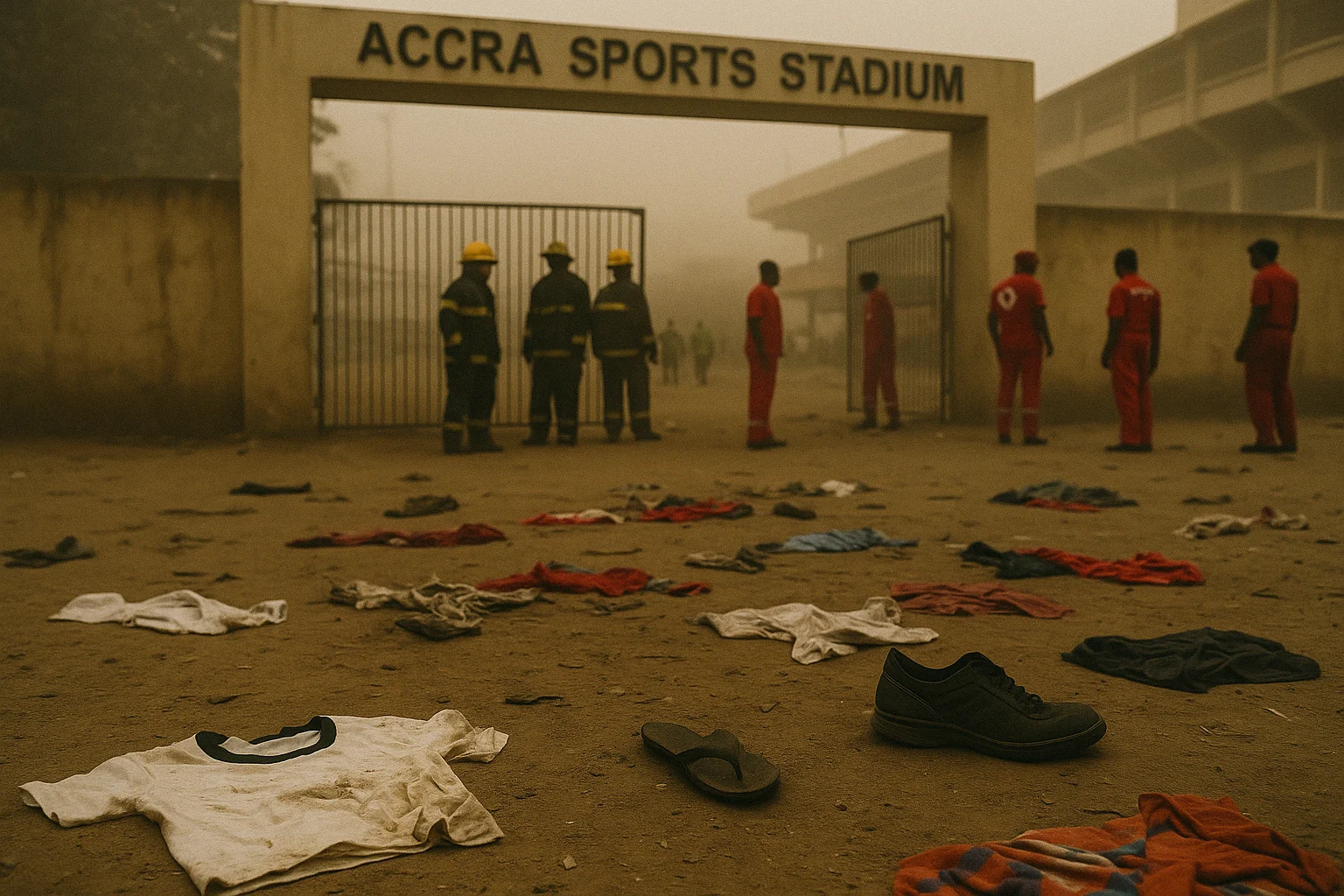
Accra Sports Stadium Disaster
by: The Calamity Calendar Team
May 9, 2001
A Day of Anticipation and Tragedy
The afternoon of May 9, 2001, was charged with an electrifying energy in Accra, Ghana. In the city’s beating heart stood the Accra Sports Stadium, its structure robustly silhouetted against the sky. Inside, tens of thousands of fans of Accra Hearts of Oak and Asante Kotoko, two of Ghana's most popular football teams, gathered with palpable excitement. This wasn’t just another match. It was a face-off between bitter rivals, a clash that transcended sports and spilled into the realms of deep-seated local pride and cultural significance.
As the sun dipped below the horizon, the tension in the stands rose. Fields of colorful jerseys created a vibrant tapestry of anticipation. Unknown to all present, a dark cloud of impending disaster hung over the stadium, threatening to turn a spectacle of sportsmanship into a tragic chapter of history.
A Background of Rivalries and Risk
The passion that fueled this rivalry was a living, breathing entity in its own right — nearly as critical to Ghanaian identity as the game itself. However, this fervor often skirted the dangerous edge of chaos. Previous football matches had already seen their share of heartbreak, with inadequate security measures contributing to chaotic and sometimes fatal outcomes.
Ghana, and indeed much of Africa, was no stranger to stadium overcrowding and insufficient emergency protocols. Yet, these warnings and precedents went largely unheeded. The festive atmosphere surrounding football often blinded both fans and officials to the lurking perils of inadequate safety measures, allowing such dangers to remain in the shadows until it was far too late.
Tensions Peak and Explode
The day’s match unfolded as expected — intense, tightly contested, with neither team willing to yield an inch. As the players battled on the turf, an equally ferocious contest brewed in the stands. When Accra Hearts of Oak finally netted two late goals to cement their win, the euphoria was palpable among their fans. But for Asante Kotoko supporters, frustration crossed over into fury.
What began as a few disgruntled murmurs quickly escalated into actions that drew eyes toward the stands. Seats were torn from their fixtures and hurled onto the field in bursts of anger. The noise erupted, echoing a volatile mixture of anger and despair.
Thanks for subscribing!
Police on scene, faced with what seemed an imminent riot, made a decision that would prove catastrophic. In an attempt to assert control, tear gas canisters were launched into the crowd. Instead of restoring order, the gas incited absolute panic. As fumes clouded the air, the flight-or-fight instinct took hold. People scrambled for the exits, their primal desire to breathe overriding all sense of order.
Chaos and Heartbreak
The stadium, designed to hold a spectacle but not a stampede, failed under pressure. Exits quickly became chokepoints, converting into traps. In an instant, the brilliance of sport was overshadowed by raw survival. People pushed and shoved, desperate to escape the engulfing blanket of tear gas.
126 lives were claimed in those desperate moments, lives that ranged from young enthusiasts to long-time fanatics. The haunting wails and cries that filled the air pierced the collective consciousness of not just a stadium but an entire nation. The Accra Sports Stadium was now etched in memory not for the icons who played on its field, but for the echoes of agony that resided within.
Aftermath and Outrage
In the painful days that followed, amid mourning and confusion, Ghana was forced to confront harsh truths about its beloved pastimes. The Accra Sports Stadium Disaster was not just about one day's events, but a culmination of neglected precautions and an oversight of basic safety.
A commission of inquiry was appointed in the wake, dissecting the depth of failures that led to such an outcome. Reports uncovered glaring gaps in crowd management and emergency response. The national conversation turned towards reformation, as the weight of loss pressed upon the nation's conscience.
Toward a Safer Future
The lessons of that day reverberated far beyond Accra. Calls for better safety measures echoed throughout the African sporting world. Stadiums tightened their security and revamped their emergency infrastructure. In Ghana, new regulations emerged, ensuring that such a catastrophe would not repeat itself. Regular safety drills became a mandate, and with them, a renewed sense of vigilance.
Memorials have since become annual reminders, a moment to reflect and honor those lost. For Ghanaians, each year brings another layer of healing, and with it, a pledge to secure the joy of the game from the shadow of its own passion.
Remembering the Lost
Over two decades later, those ensuing moments of fear and chaos remain a reminder of the price paid when joyfully charged gatherings turn tragic. As stadiums continue to host the beautiful game, the memory of May 9 serves not only as a cautionary tale but as a testament to the resilience and heart of a nation forever marked by that fateful day. The Accra Sports Stadium Disaster — a solemn reminder etched painfully into the annals of sporting history.
Stay in the Loop!
Become a Calamity Insider and get exclusive Calamity Calendar updates delivered straight to your inbox.
Thanks! You're now subscribed.